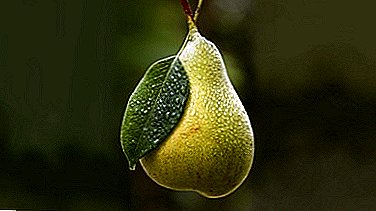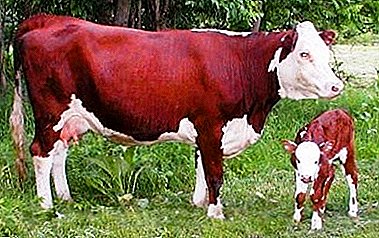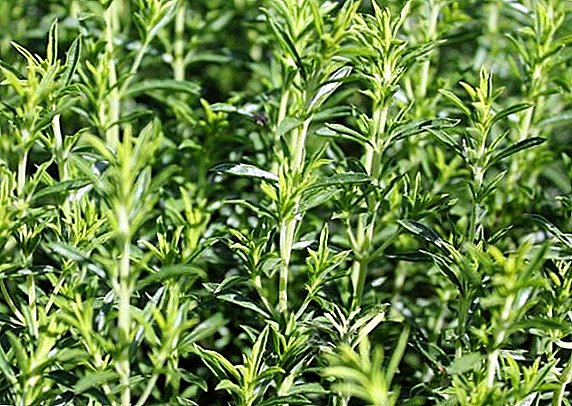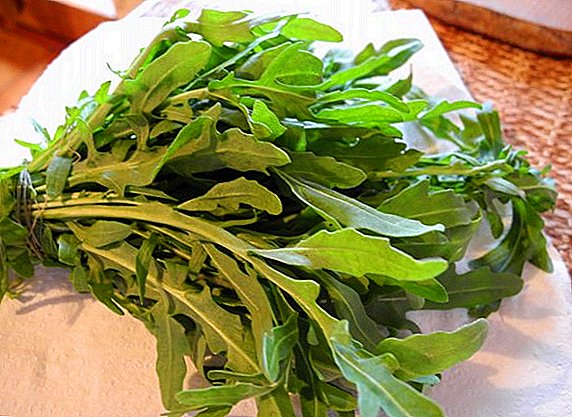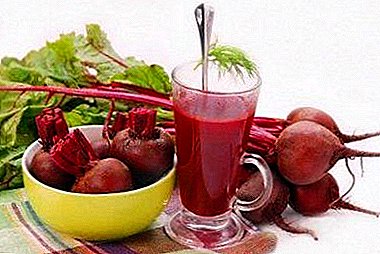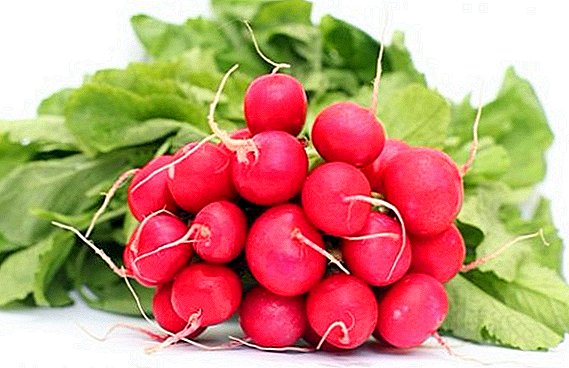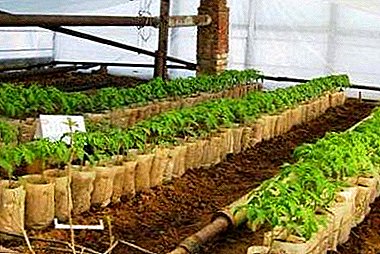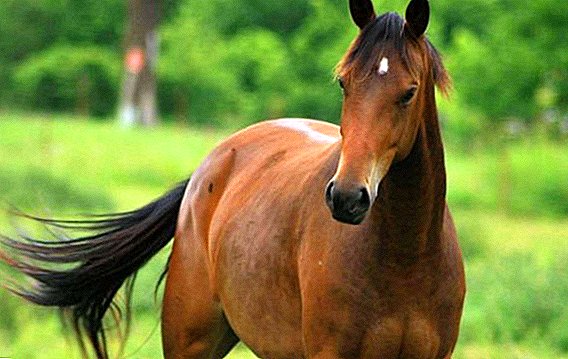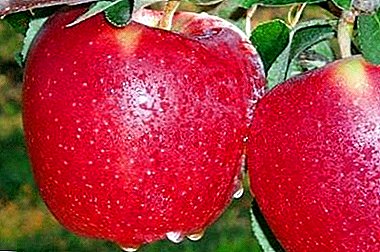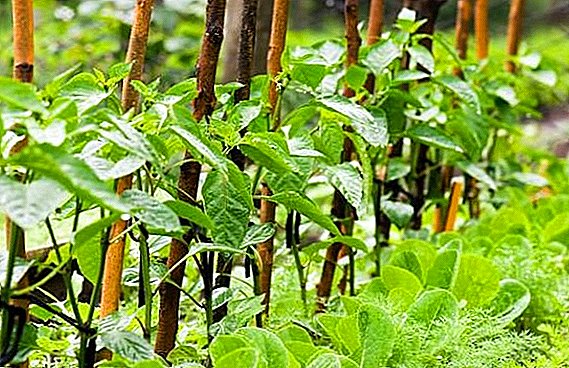 Many gardeners are engaged in growing not only popular tomatoes and cucumbers in the greenhouse, but also peppers. In this culture have different requirements for the created microclimate, because of which the experience obtained once cannot be used to produce a large crop of peppers in the future. Today we will discuss one of the aspects of crop care - watering the peppers in the greenhouse, find out how often you need to moisturize the soil, as well as talk about the optimal conditions for its good growth and development. Find out how to facilitate irrigation of the crop in the greenhouse.
Many gardeners are engaged in growing not only popular tomatoes and cucumbers in the greenhouse, but also peppers. In this culture have different requirements for the created microclimate, because of which the experience obtained once cannot be used to produce a large crop of peppers in the future. Today we will discuss one of the aspects of crop care - watering the peppers in the greenhouse, find out how often you need to moisturize the soil, as well as talk about the optimal conditions for its good growth and development. Find out how to facilitate irrigation of the crop in the greenhouse.
Conditions for growing peppers in the greenhouse
Before starting the discussion of irrigation of Bulgarian pepper in a polycarbonate greenhouse, it is worthwhile to talk about the requirements of the crop to the growing environment.

It cannot be said that pepper depends solely on irrigation, therefore, in addition to moisture, it needs to create comfortable conditions, namely, prepare the soil, properly plant the seedlings, maintain the required air and soil temperature, regularly feed the culture with mineral fertilizers, provide good lighting (sunny or artificial), and also take care of the aerial parts, protecting the soil.
Substrate preparation
Let's start with the fact that the soil layer should be at least 25 cm. At the same time, crops such as cucumbers, onions, cabbage should be the forerunners of pepper. In the event that solanaceous were grown before pepper, the substrate must be changed, since these crops are considered to be bad predecessors for pepper.
Proper pepper planting
First we form beds of 100 cm wide. Between the beds there should be a gap of 50 cm. So your plants will not interfere with each other, and care for them will be greatly facilitated. Depending on the variety / hybrid, the distance between plants in a row varies between 15-35 cm. If the variety implies the development of a large above-ground part, then it is better to retreat more, if the plant is "dwarf", then we plant seedlings closer to each other.
Important! When picking up seedlings, it’s impossible to destroy the earthy one, otherwise acclimatization will take longer, which is why you will receive the harvest later.
Temperature
After picking seedlings, the temperature in the greenhouse must be at least +25 ˚С. It should not be forgotten that the substrate should also be warm, so you need to warm up the greenhouse 1-2 weeks before the pick of the peppers. At the moment of the beginning of flowering, the temperature is raised to +30 ˚С, while ensuring high humidity.

As for dressings, you can't do without them, especially if you plant hybrids that are capable of forming a huge number of fruits. Pepper in any case need "mineral water" even under the condition that the substrate is very fertile and there is a lot of humus in it. At the initial stage, when the culture forms a green mass, a sufficient amount of nitrogen should be added. In this case, you need to close up a small amount of fertilizer, conducting a few fertilizing. Next, you need to take care of the formation of the fruit and their early maturation, so make phosphorus. Potassium, as well as trace elements, it is better to make a small amount after tying the pepper.
Important! The first dressing is carried out 3 weeks after planting in the greenhouse.
Lighting
One way or another, all plants need light for photosynthesis, so if you want to get a good harvest of this crop, then you need to take care of a long light day. Pepper requires 12-14 hours of good lighting, during which a sufficient amount of intense light will fall on the plant (partial shade or shadow does not fit). In this case, saving on electricity is not worth it, since the lighting is the factor that cannot be blocked with additional feedings or additional moisture.
It is worth noting that the sunlight will warm up the greenhouse in the absence of wind, so watch the temperature carefully so that it does not rise above +35 ° C.
Ground Formation and Garter
Most often, hybrids are grown in greenhouses that grow more than 1 m in height. Pepper has a rather fragile above-ground part, so it is imperative to hold a garter, otherwise a tall plant will simply “collapse” under the weight of the fruit. Plants must be formed into several stems, while removing stepchildren and unnecessary shoots. It is also worth shortening the tops of the twigs to control growth.

Soil protection
Pepper has a rather fragile rhizome, so it is almost impossible to carry out regular loosening. In this case, watering forms a crust, due to which soil aeration is reduced. As a result, the plant can simply stop growing and you will not get a harvest, or it will be very scarce. In order to solve this problem, you should mulch the planting with sawdust, straw, dry humus or mowed grass (not weed grasses). So you protect the soil from overheating, retain moisture in it, and prevent the formation of a crust.
Since the yield depends on the humidity of the air and the substrate, then we will tell you more about how to properly water the pepper in a polycarbonate greenhouse.
Did you know? As early as the 11th century, Italian monks invented a system for measuring the amount of water. Water meter was a hole with an area of 290 square meters. cm, through which water was passed under constant pressure (0.1 m). In a minute 2.12 cubes of water flowed through the water meter.
How often to water?
We now turn to the discussion of pepper irrigation in a polycarbonate greenhouse, namely, how often the beds should be irrigated.

It is necessary to moisten the soil every 5-7 days, depending on the air temperature in the greenhouse, as well as the number of hours during which the pepper is illuminated by sunlight, as this increases the evaporation of moisture.
For seedlings there is a norm. According to her, young plants of pepper before picking should be irrigated once every 2 days. After transplantation, all the plants are watered abundantly, and then transferred to the irrigation system for adult plants (every 5-7 days).
Watering is carried out with extremely warm water and only under the root. In addition to irrigation, it is necessary to humidify the air. To do this, daily or once every 2 days, spill the track with water, or spray water on the greenhouse walls. With mass fruiting, watering should be stopped for a while. So you will increase the number of flowers on the pepper.
Application rates
Watering pepper in the greenhouse after planting is carried out strictly according to the instructions, since we need to pour in as much water as the crop requires.
If manual soil moistening is carried out, then 500 ml of warm distilled water should be poured under 1 bush. At the same time, the norm corresponds to the substrate rich in microelements and humus.
For poor sandy soil there are "standards" of watering. Pepper in such a substrate requires more moisture, since sandy soils do not retain water. You will need to make 1 liter for each plant. Soil moisture should be at least 70%, and air - about 60%. In the case when watering pepper automated, It is necessary to use 10-15% less water for irrigating each square, as automatic systems accurately calculate the application rate without errors.

What is dangerous overmoistening soil?
Above, we talked about how often Bulgarian pepper should be watered in a greenhouse, but the possibility of waterlogging and the consequences of such actions should also be discussed.
If you water the pepper too often, then it will cause the fungus to multiply, which will lead to fungal diseases. This is a very serious problem in greenhouse conditions, since the fungus can be suppressed only when the air humidity decreases, but this cannot be done in greenhouses, because there is a possibility of a negative impact not only on the fungus, but also on the culture itself.
Important! The fungus can appear on the glass of the greenhouse, from where it must be removed immediately. Spores of such a pest are dangerous not only for plants, but also for humans.
It is necessary to strictly adhere to the rules of irrigation and to normalize the introduction of moisture into the soil, taking into account the quality of the water itself. So, if you water the culture with running water, then you risk "freezing" the roots. This will entail a stunted growth and development of pepper, since the culture will think that these conditions are not optimal, and therefore it is impossible to form the ovary. For this reason, do not neglect our instructions and be sure to check the temperature of the water before watering.
Basic rules and methods of watering in the greenhouse
Since pepper is needed water strictly under the root, then many methods of watering immediately disappear. For this reason, below we will discuss the most popular and effective options for watering pepper in the greenhouse.
Learn more about how to use the drop system
Manual
Manual watering Pepper in the greenhouse is suitable for small areas, and is also used after transplanting. This option includes the use of various watering cans, hose, water tanks, etc. This option allows you to partially control the situation and make sure that the moisture does not fall on the plants, but the water consumption and the humidity of the substrate are almost impossible to control.

Manual watering can not be called effective because it does not save water, takes a lot of time and effort. Also, you will not be able to control the exact amount of moisture introduced per square meter, especially if you use a hose. In the open ground, this method can be used because the water evaporates faster, and varieties grown in the garden, less "capricious."
Did you know? Juice is produced from sweet pepper, which is very useful for people suffering from diabetes.
That is, we can conclude that hand-watering is ineffective in greenhouse conditions and can only be used by experienced gardeners who can accurately calculate the rate of water application for each plant.
Mechanical
Mechanical watering It is a system of hoses of various diameters and structures, which are connected to each plant. At the same time, watering is not automated, so a person should control the water supply, as well as its pressure.

Mechanical irrigation differs from manual watering in that you do not need to walk around the plants with a hose / bucket and irrigate them. The laid pipe system requires only to turn on the water, after which they themselves will deliver the liquid to each plant separately. This system allows you to irrigate each pepper under the root, eliminating the ingress of moisture on the leaves.
Also mechanical irrigation allows to reduce water consumption and, having a measuring device, to control the amount of liquid introduced.
The downside in this case is the price of the entire system, but at the same time, this watering allows you to avoid moisture on the above-ground part of the pepper, reducing the chance of a fungal disease and the loss of a large part of the crop.
Important! Mechanical irrigation requires a heated tank so that warm water flows into the irrigation system.
Automatic and semi-automatic
Automatic watering is a system of watering pipes, which is connected to a special device, not only controlling the rate of water application, but also receiving signals from air humidity sensors, after which irrigation is turned on or off. Such a system works without human intervention, however, requires an initial adjustment and the formation of a scenario in which the program will know how much water and at what time you need to make the ground.

In fact, we have the simplest computer, which is able to control watering, conducting them according to a predetermined plan.
Semi-automatic system differs from the automatic presence of the human role. If automatics can carry out watering autonomously, then a semi-automatic system requires human participation. An example of a semi-automatic system is a pipe system, which is connected to a mechanical irrigation timer. A person comes and sets a certain time for watering on a mechanical timer, after which the device opens the valves and runs water through the pipes. As soon as the time is over, the simplest mechanism works and the watering stops.
Automatic systems are best used for remote areas where very demanding varieties / hybrids of pepper grow, which will not tolerate the absence of moisture. Semiautomatic is used for greenhouses located on home plots, which can be accessed without spending much time.
Combined
Combined version It is a system, part of which is controlled by a person, and the other part is an automatic system.

This option makes sense in the following cases:
- power outages (allows watering plants when the automatic is turned off);
- when different varieties of pepper grow in the greenhouse, or other crops are planted next to the pepper (automatic systems do not always give the opportunity to set 2 scenarios for different varieties / crops);
- when the pressure is very weak and the automation does not open the valves for water start-up through the system.
Read also how to grow eggplants, beets, zucchini, tomatoes, cucumbers in the greenhouse
Gardener's mistakes when watering pepper in a greenhouse
At the end of the topic we will discuss the common mistakes that lead to plant rotting, or to lower yields.
First mistake - The use of substandard pipes. It should be understood that any irrigation system must meet the water pressure and be durable. For this reason, thin, soft irrigation pipes should not be used. It is better to give preference to rigid plastic pipes, especially in the case of the formation of the main frame for the irrigation system.
Second mistake - loosening the soil. Above, we wrote that the soil should be saturated with oxygen. If you do not lay the mulch, then be sure to loosen the substrate after each watering. At the same time spend loosening as carefully as possible so as not to hurt the rhizome.

Third mistake - excessive watering during flowering. When the pepper begins to bloom massively, the rate of moisture should be significantly reduced, otherwise the flower stalks will simply fall off, and you will lose the lion's share of the crop.
Fourth mistake - excess of nitrogen. During flowering, the plant does not need nitrogen, since the aboveground part is already formed, but potassium and phosphorus are required in larger quantities. If you overdo it with nitrogen, then the pepper will not be able to absorb potassium from the soil (due to the fact that nitrogen blocks the absorption of potassium), due to which flowering may not occur at all. Therefore, normalize the application of nitrogen fertilizers and reduce the dosage in time.
Fourth mistake - too high a temperature. If the temperature in the greenhouse is set above +35 С, then the inflorescences begin to fall off massively, since the culture does not like intense heat. Also, high temperatures reduce humidity, which negatively affects the yield.
Did you know? The use of Bulgarian pepper leads to the release into the blood of endorphins, which are often called "hormones of happiness."
This concludes the discussion on how often peppers should be watered in a greenhouse during the period of ripening, flowering or picking of seedlings. Use our instructions and you will get a bountiful harvest of pepper.


